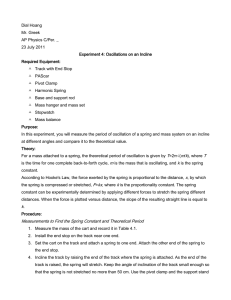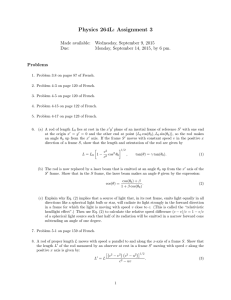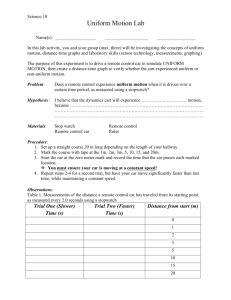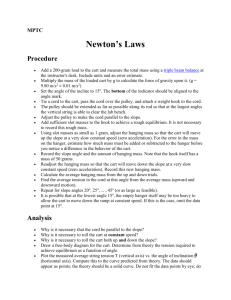AP_Physics_B_-_Oscillations_on_a_n_incline
advertisement
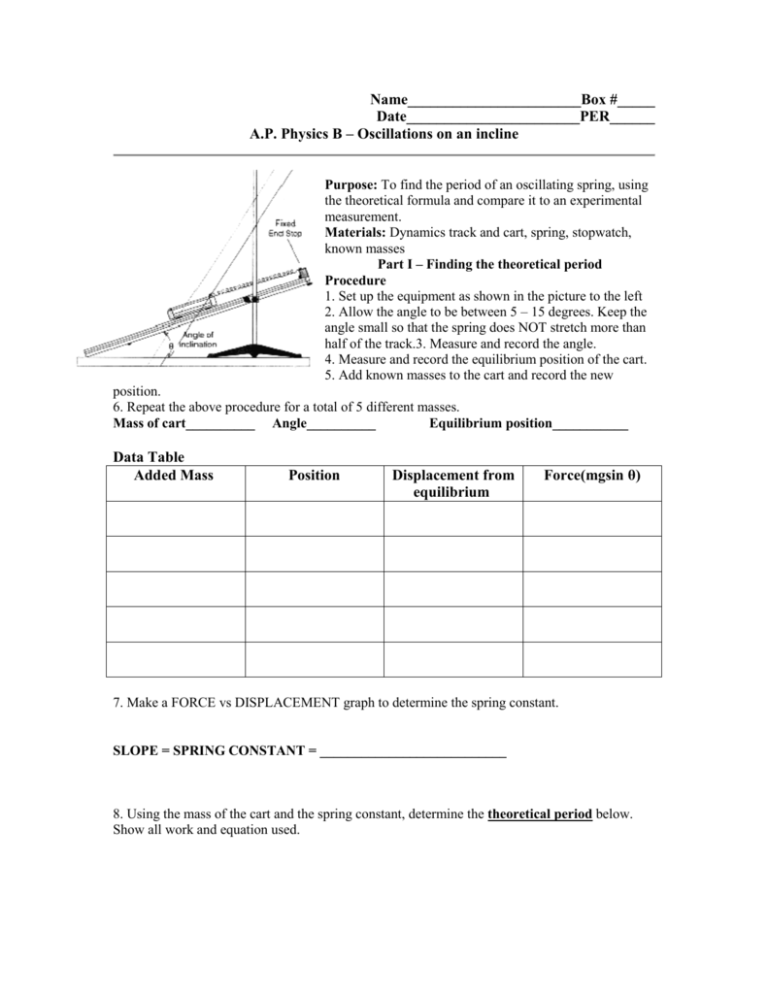
Name_______________________Box #_____ Date_______________________PER______ A.P. Physics B – Oscillations on an incline Purpose: To find the period of an oscillating spring, using the theoretical formula and compare it to an experimental measurement. Materials: Dynamics track and cart, spring, stopwatch, known masses Part I – Finding the theoretical period Procedure 1. Set up the equipment as shown in the picture to the left 2. Allow the angle to be between 5 – 15 degrees. Keep the angle small so that the spring does NOT stretch more than half of the track.3. Measure and record the angle. 4. Measure and record the equilibrium position of the cart. 5. Add known masses to the cart and record the new position. 6. Repeat the above procedure for a total of 5 different masses. Mass of cart__________ Angle__________ Equilibrium position___________ Data Table Added Mass Position Displacement from equilibrium Force(mgsin θ) 7. Make a FORCE vs DISPLACEMENT graph to determine the spring constant. SLOPE = SPRING CONSTANT = ___________________________ 8. Using the mass of the cart and the spring constant, determine the theoretical period below. Show all work and equation used. Part II – Finding the experimental period Procedure 1. Using the same angle in Part I, displace the cart from equilibrium a specific distance and let it go. Time 3 oscillations and record the time in the data table. 2. Repeat this measurement at least 5 times, using the same initial displacement (amplitude). Time 1 Time 2 Time 3 Time 4 Time 5 Average Time for 3 Oscillations 3. Determine a % difference below between Part I and Part II. Period

